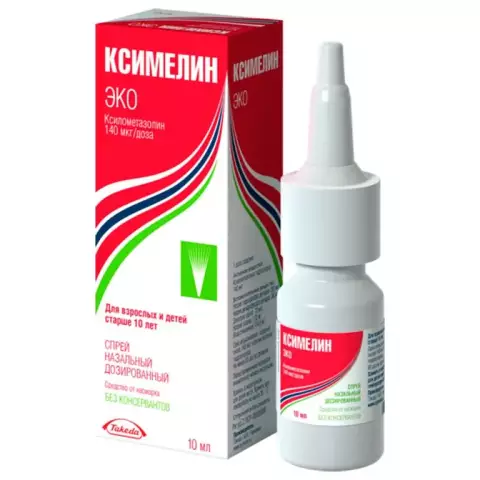- Author Rachel Wainwright [email protected].
- Public 2023-12-15 07:39.
- Last modified 2025-11-02 20:14.
Furosemide
Instructions for use:
- 1. Pharmacological action
- 2. Release form
- 3. Indications for use
- 4. Contraindications
- 5. Method of application
- 6. Drug interactions
- 7. Side effects
- 8. Storage conditions
Prices in online pharmacies:
from 19 rubles.
Buy

Furosemide is a synthetic diuretic drug for the treatment of edema syndrome.
Pharmacological action of Furosemide
The active ingredient Furosemide has a diuretic effect, promoting enhanced excretion of water with a simultaneous increase in the excretion of calcium and magnesium ions.
When using Furosemide against the background of heart failure, there is a rapid decrease in preload on the heart, caused by the expansion of large veins.
After intravenous administration, the action of Furosemide occurs quickly - after 5-10 minutes, after oral administration - on average in an hour.
The duration of the diuretic effect from taking Furosemide is two to three hours, and with reduced renal function, the effect of the drug can last up to eight hours.
Release form
The drug Furosemide is produced in the form of:
- Granules for preparing a suspension for oral administration (for use in pediatrics), in cans of 150 ml and sachets;
- Solution for intravenous and intramuscular administration, in ampoules of 2 ml;
- Tablets of 40 mg.
Indications for the use of Furosemide
According to the instructions, Furosemide is prescribed for the treatment of edematous syndrome of various origins, including conditions with:
- Liver cirrhosis (portal hypertension syndrome);
- Chronic heart failure stage II-III;
- Nephrotic syndrome.
In addition, according to the instructions, Furosemide is used for:
- Cardiac asthma;
- Pulmonary edema;
- Eclampsia;
- Edema of the brain;
- Severe arterial hypertension;
- Forced diuresis;
- Hypercalcemia;
- Some forms of hypertensive crisis.
Contraindications
The use of Furosemide according to the instructions is contraindicated in the following cases:
- With stenosis of the urethra;
- With acute glomerulonephritis;
- Against the background of acute renal failure with anuria;
- With obstruction of the urinary tract with a stone;
- With hyperuricemia;
- With alkalosis;
- In acute myocardial infarction;
- With hypokalemia;
- Against the background of severe liver failure;
- In precomatose states;
- With a diabetic coma;
- With arterial hypotension;
- With hepatic coma and precoma;
- With hyperglycemic coma;
- With decompensated mitral or aortic stenosis;
- With gout;
- With an increase in central venous pressure (more than 10 mm Hg);
- Against the background of hypertrophic obstructive cardiomyopathy;
- With digitalis intoxication;
- In violation of water-electrolyte metabolism, including hyponatremia, hypovolemia, hypochloremia, hypocalcemia, hypokalemia, hypomagnesemia;
- With pancreatitis;
- With hypersensitivity to Furosemide.
Furosemide is prescribed with caution to elderly people, especially those with severe atherosclerosis, during pregnancy and lactation, as well as against the background of the following diseases:
- Hypoproteinemia;
- Hyperplasia of the prostate;
- Diabetes.
Method of application of Furosemide
As a rule, the dosage and frequency of application of Furosemide is set by the doctor individually and depends on:
- Clinical situation;
- Indications;
- The age of the patient.
When taking Furosemide by mouth, the adult initial dose ranges from 20 to 80 mg per day, which can be gradually increased to 600 mg per day.
Children's single dose of Furosemide is calculated based on body weight and is 1-2 mg per 1 kg, but not more than 6 mg / kg.
The dose of Furosemide for adults with intravenous (jet) or intramuscular administration should not exceed 40 mg per day (in rare cases - up to 80 mg, divided by half).
Taking Furosemide during pregnancy is possible only for a minimum period, taking into account the perceived risk from the use of the drug.
Drug interactions

Some drug combinations with Furosemide can lead to an undesirable therapeutic effect, which should be taken into account in the therapy.
With the simultaneous use of Furosemide with:
- Antibiotics of the cephalosporin group - the risk of increased nephrotoxicity increases;
- Antibiotics of the aminoglycoside group - it is possible to enhance the ototoxic and nephrotoxic effects;
- With hypoglycemic agents and insulin - their effectiveness may decrease;
- Beta-adrenergic agonists, including terbutaline, fenoterol, salbutamol and glucocorticoids - an increase in hypokalemia may be observed;
- Phenytoin - the diuretic effect of Furosemide is sharply reduced;
- Indomethacin and other non-steroidal anti-inflammatory drugs - a decrease in the diuretic effect is possible;
- Astemizole - the risk of arrhythmias increases;
- ACE inhibitors - there is an increase in antihypertensive action;
- Colestipol and cholestyramine - there is a decrease in the absorption and diuretic effect of Furosemide;
- Lithium carbonate - strengthening the effect of the drug;
- Digitoxin and digoxin - an increase in the toxicity of cardiac glycosides is possible;
- Cisplatin - increased ototoxic action;
- Cisapride - there is an increase in hypokalemia.
Side effects of Furosemide
When using Furosemide, according to indications, disorders of the cardiovascular system may occur, expressed in the form of arrhythmias, lowering blood pressure, collapse, orthostatic hypotension and tachycardia.
Furosemide, according to reviews, can lead to disorders of the nervous system, manifested as:
- Dizziness;
- Myasthenia gravis;
- Drowsiness;
- Headache;
- Paresthesia;
- Calf muscle cramps;
- Adinamia;
- Confusion of consciousness;
- Apathy;
- Lethargy;
- Weakness.
In addition, according to reviews, Furosemide can lead to:
- Visual and hearing impairments (sense organs);
- Decreased potency, acute urinary retention (especially against the background of prostatic hypertrophy), hematuria, interstitial nephritis (genitourinary system);
- Exacerbation of pancreatitis, nausea, dry mouth, decreased appetite, vomiting, thirst, cholestatic jaundice, constipation or diarrhea (digestive system);
- Hypovolemia, hypokalemia, hyponatremia, hypochloremia, hypocalcemia, hypomagnesemia, metabolic alkalosis (water-electrolyte metabolism);
- Leukopenia, agranulocytosis, thrombocytopenia, aplastic anemia (hematopoietic system);
- Muscle weakness, arterial hypotension, hyperglycemia, dizziness, hyperuricemia with possible exacerbation of gout, convulsions (metabolism).
Also, when using Furosemide according to indications in the presence of a predisposition, allergic reactions such as photosensitization, exudative erythema multiforme, purpura, vasculitis, urticaria, fever, exfoliative dermatitis, chills, anaphylactic shock, necrotizing angiitis and skin pruritus may occur.
When administered intravenously, Furosemide, according to reviews, can cause renal calcification (mainly in premature babies) and thrombophlebitis.
Storage conditions
According to indications, Furosemide is dispensed from pharmacies for medical purposes. Shelf life is up to three years.
Furosemide: prices in online pharmacies
|
Drug name Price Pharmacy |
|
Furosemide 40 mg tablets 50 pcs. 19 RUB Buy |
|
Furosemide 40 mg tablets 20 pcs. RUB 20 Buy |
|
Furosemide 40 mg tablets 50 pcs. RUB 24 Buy |
|
Furosemide 40 mg tablets 50 pcs. RUB 24 Buy |
|
Furosemide tablets 40mg 50 pcs. RUB 31 Buy |
|
Furosemide 40mg tablets 50 pcs Renewal RUB 40 Buy |
|
Furosemide 40 mg tablets 50 pcs. 42 RUB Buy |
Information about the drug is generalized, provided for informational purposes only and does not replace the official instructions. Self-medication is hazardous to health!






